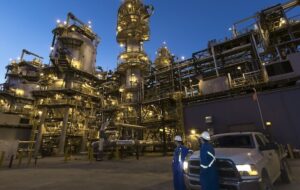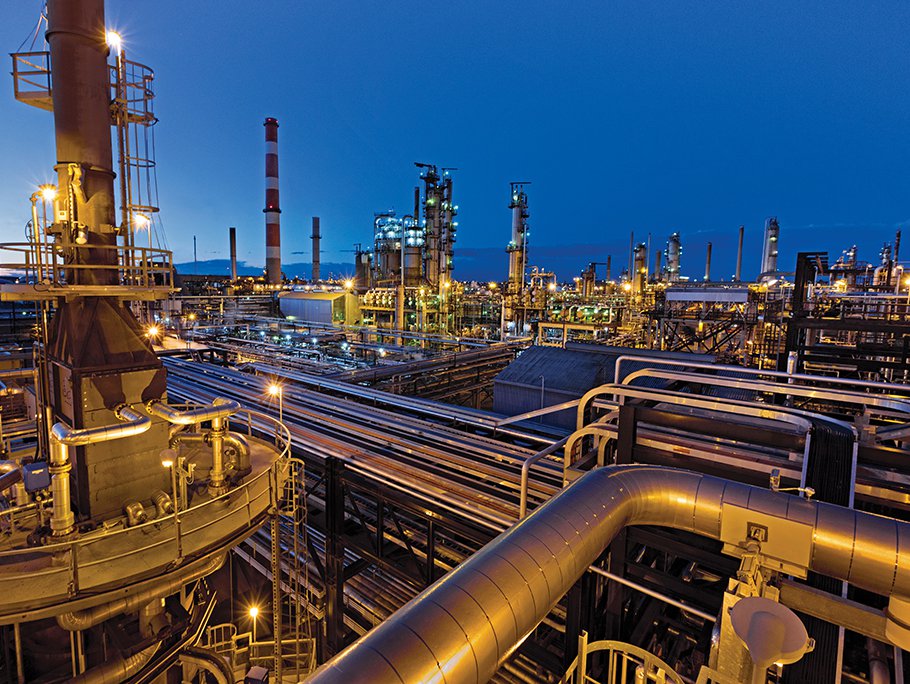Imperial Oil Limited

Imperial Oil Limited: A Comprehensive Overview
Introduction
Imperial Oil Limited, a cornerstone of Canada's energy sector, has been a significant player in the oil and gas industry for over a century. Established in 1880, Imperial Oil Limited has evolved through various economic cycles and technological advancements, maintaining its status as one of the country's leading integrated energy companies. This report delves into the history, operations, financial performance, environmental impact, and future prospects of Imperial Oil Limited.
History and Evolution
Founding and Early Years
Imperial Oil Limited was founded in 1880 in London, Ontario, by a group of entrepreneurs who recognized the potential of the oil industry. The company quickly expanded its operations, establishing refineries and marketing petroleum products across Canada. In 1898, Imperial Oil was acquired by the Standard Oil Company, which significantly boosted its resources and capabilities.
Mid-20th Century Growth
The mid-20th century marked a period of substantial growth for Imperial Oil. The discovery of the Leduc No. 1 oil well in Alberta in 1947 was a turning point, transforming Canada into a major oil producer. Imperial Oil played a pivotal role in this development, investing heavily in exploration, production, and refining infrastructure.
Modern Era and Technological Advancements
In recent decades, Imperial Oil Limited has embraced technological advancements to enhance its operational efficiency and environmental performance. The company has invested in advanced extraction techniques, such as horizontal drilling and hydraulic fracturing, to maximize resource recovery. Additionally, Imperial Oil has focused on developing cleaner fuels and reducing greenhouse gas emissions.
Operations and Business Segments
Upstream Operations
Imperial Oil's upstream operations encompass exploration, development, and production of crude oil and natural gas. The company has significant assets in the Athabasca oil sands, which are among the largest oil reserves in the world. Key projects include the Kearl Oil Sands and the Cold Lake in-situ operations. These assets contribute substantially to Imperial Oil's production volumes and revenue.

Downstream Operations
The downstream segment involves refining, transportation, and marketing of petroleum products. Imperial Oil Limited operates three major refineries in Canada: the Strathcona Refinery in Alberta, the Sarnia Refinery in Ontario, and the Nanticoke Refinery in Ontario. These refineries produce a wide range of products, including gasoline, diesel, and lubricants. The company also owns and operates a vast network of Esso-branded retail stations, providing consumers with fuel and convenience products.
Chemical Segment
Imperial Oil's chemical segment produces a variety of petrochemical products used in manufacturing, transportation, and consumer goods. The company operates a large petrochemical complex in Sarnia, Ontario, which produces ethylene, polyethylene, and other chemicals. These products are essential components in plastics, packaging, and other industrial applications.
Financial Performance
Revenue and Profitability
Imperial Oil's financial performance has been influenced by fluctuations in global oil prices, production volumes, and refining margins. The company's revenue typically mirrors the trends in the oil and gas markets. For instance, during periods of high oil prices, Imperial Oil experiences increased revenue and profitability. Conversely, low oil prices can impact financial results negatively.
Capital Expenditures and Investments
Imperial Oil Limited allocates significant capital towards sustaining and expanding its operations. These investments are aimed at maintaining production levels, enhancing refining capabilities, and developing new technologies. The company has also focused on improving its environmental performance through investments in emission reduction technologies and renewable energy projects.
Dividend Policy
Imperial Oil Limited has a history of returning value to shareholders through dividends and share repurchases. The company's dividend policy reflects its commitment to providing a stable and growing return to investors. Dividend payments are often influenced by the company's financial performance and cash flow generation.
Environmental and Social Responsibility
Environmental Initiatives
Imperial Oil has taken significant steps to address environmental concerns associated with its operations. The company has implemented measures to reduce greenhouse gas emissions, improve energy efficiency, and minimize the environmental impact of its projects. Notably, Imperial Oil is a participant in Canada's Oil Sands Innovation Alliance (COSIA), a collaboration aimed at developing and sharing technologies to improve environmental performance in the oil sands.
Community Engagement and Social Responsibility
Imperial Oil Limited is committed to contributing positively to the communities where it operates. The company supports various community initiatives, including education, health, and environmental programs. Imperial Oil's social responsibility efforts also extend to Indigenous communities, with initiatives aimed at promoting economic development and preserving cultural heritage.
Challenges and Opportunities
Market Volatility
The oil and gas industry is inherently volatile, with prices subject to geopolitical events, supply and demand dynamics, and regulatory changes. Imperial Oil must navigate these uncertainties while maintaining operational efficiency and profitability. The company's diversified operations and robust financial position help mitigate some of these risks.
Environmental Regulations
Increasing environmental regulations pose both challenges and opportunities for Imperial Oil. The company must comply with stringent emission standards and environmental protection laws. However, these regulations also drive innovation and the development of cleaner technologies, which can provide a competitive advantage in the long term.

Energy Transition
The global shift towards renewable energy and reduced carbon emissions presents a significant challenge for traditional oil and gas companies. Imperial Oil is actively exploring opportunities in renewable energy and low-carbon technologies. The company's research and development efforts focus on finding sustainable solutions that align with the global energy transition.
Future Outlook
Technological Innovation
Technological innovation will play a crucial role in shaping the future of Imperial Oil. The company is investing in advanced extraction techniques, digital technologies, and automation to enhance operational efficiency and reduce costs. Innovations in carbon capture and storage, as well as renewable energy integration, are expected to drive long-term sustainability.
Strategic Partnerships
Collaborations and partnerships are essential for Imperial Oil's growth strategy. The company continues to seek strategic alliances with technology providers, research institutions, and other industry players. These partnerships facilitate knowledge sharing, risk mitigation, and access to new markets and resources.
Sustainable Growth
Imperial Oil's future growth strategy is centered around sustainability. The company aims to balance economic growth with environmental stewardship and social responsibility. By investing in cleaner technologies, improving operational efficiency, and engaging with stakeholders, Imperial Oil is positioning itself for sustainable growth in a changing energy landscape.
Conclusion
Imperial Oil Limited has a rich history and a significant presence in Canada's energy sector. The company's integrated operations, financial strength, and commitment to innovation and sustainability position it well for future challenges and opportunities. As the energy industry evolves, Imperial Oil's focus on technological advancement and environmental responsibility will be key drivers of its continued success.
In case, if you need help with Work Visa and Immigration Services in Canada, please fill in application below or contact us directly.

